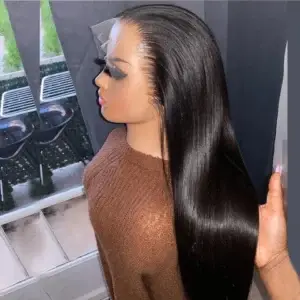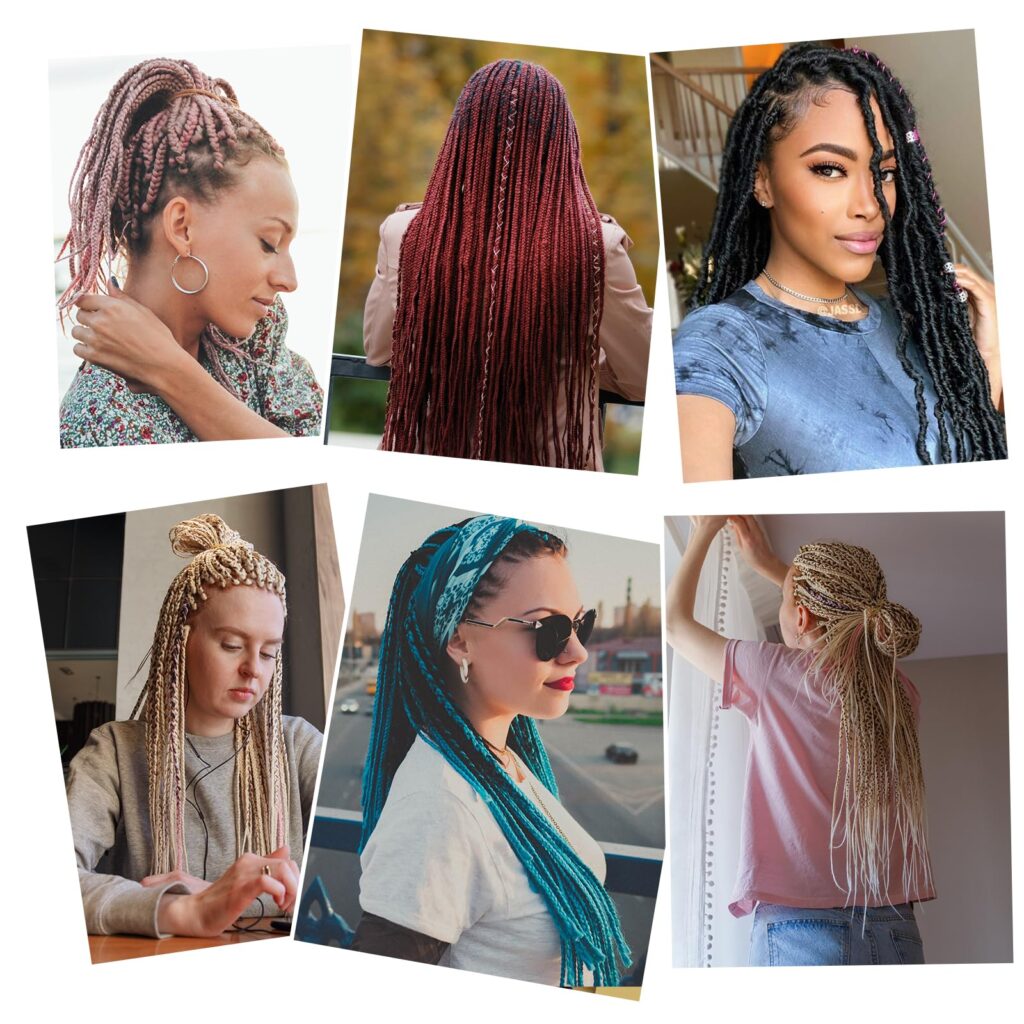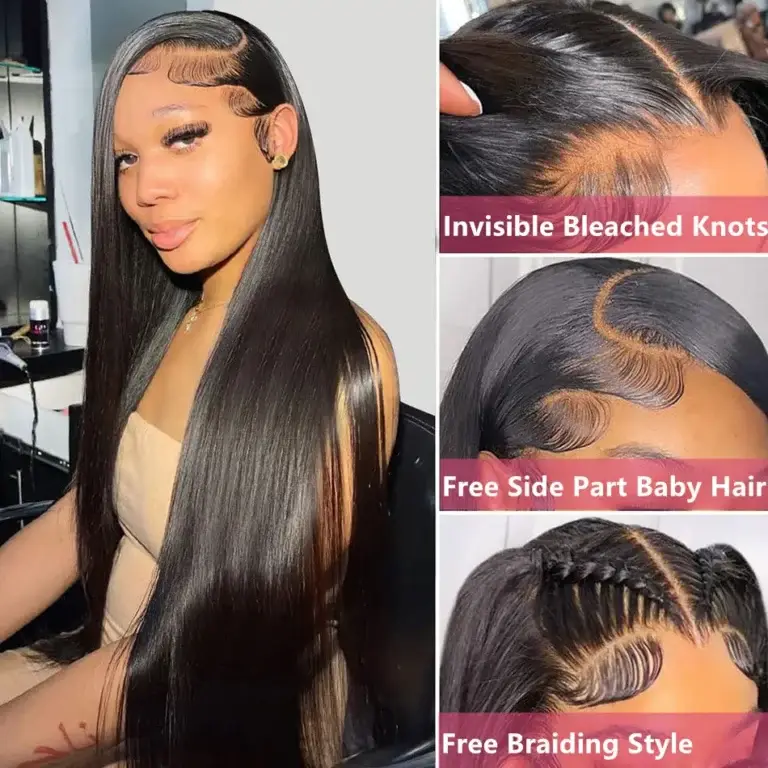Wigs have stood the test of time and culture as a symbol of fashion, status, and personal expression, from the ornate wigs of the French court to the edgy styles worn by today’s celebrities. The wig industry has advanced dramatically in recent years, now offering a wide range of options to meet a variety of needs and preferences. Whether you need a temporary style change, a solution for hair loss, or a professional-grade hairpiece for a performance, the world of wigs has something for everyone. This comprehensive guide delves into the complexities of wig selection, styling, and maintenance, preparing you to find and care for your ideal hairpiece.
I. Understanding Wig Types
A. Human Hair Wigs
Human hair wigs, known for their exceptional realism, durability, and versatility, can be styled with heat tools in the same way that natural hair is. They are available in a variety of textures, including straight and sleek to curly and voluminous. While human hair wigs are the most expensive option, their durability and customizability make them a worthwhile investment for many.

B. Synthetic Wigs
Synthetic wigs provide an affordable alternative and are pre-styled in a wide range of colors, textures, and lengths. They are easy to maintain and require little styling, making them ideal for everyday wear. However, synthetic fibers are not heat resistant and have a shorter lifespan than human hair wigs, lasting only 3-6 months with proper care.
C. Blended Wigs

Blended wigs, which combine the benefits of both human hair and synthetic fibers, provide a natural look and feel at a lower cost than pure human hair wigs. These wigs frequently have human hair in the front for a realistic hairline and synthetic fibers throughout the rest of the wig for added volume and durability.
II. Finding the Right Wig for You
A. Determining Your Face Shape
Identifying your face shape is critical in choosing a wig style that complements your features. For example, oval faces can wear a variety of styles, whereas round faces may benefit from wigs with longer layers or side-swept bangs to give the impression of length.

B. Cap Size and Structure
Wig cap sizes range from petite to large, so take an accurate measurement of your head to ensure a comfortable fit. The cap construction, such as lace front, monofilament, or machine-made, influences the wig’s breathability, naturalness, and styling options.
C. Hair Color and Texture
For a seamless, realistic appearance, select a wig color and texture that complements your skin tone and natural hair characteristics. Consider consulting a wig specialist or stylist for personalized advice.

III. Wig Styling Tips
With the right tools and techniques, you can customize your wig to fit your mood and occasion. To protect synthetic wigs, use cool air settings on your dryer and avoid using heat styling tools. Human hair wigs can be styled with heat tools, but be sure to use a heat protectant spray and follow the manufacturer’s care instructions to keep the wig in good condition.

IV. Wig Care and Maintenance
To ensure your wig’s beauty and longevity, establish a regular cleaning and conditioning routine. To properly care for your wig, follow this step-by-step guide:
Regular Cleaning and Conditioning
- Select the Right Products: Invest in high-quality wig-specific shampoos and conditioners that will gently clean and nourish synthetic or human hair fibers without causing damage. Avoid using regular hair care products because they may contain harsh ingredients that are unsuitable for wigs.
- Before washing, gently remove any tangles or knots with a wide-toothed comb or wig brush made for your wig’s fiber type. To avoid breaking the hair, begin combing from the ends and work your way up to the roots.
- Wash with lukewarm water. Fill a basin or sink with lukewarm water and a few drops of wig shampoo. Submerge the wig gently, without rubbing or twisting, and soak for a few minutes. Rinse thoroughly until the water clears.
- Condition and detangle: Apply a small amount of wig conditioner to the wig, concentrating on the middle and ends. Allow it to sit for a few minutes before gently combing through the wig to detangle. Rinse the conditioner thoroughly with lukewarm water.
- Drying: Gently squeeze out any excess water from the wig, taking care not to wring or twist it. Allow synthetic wigs to air dry on a wig stand or a towel laid flat. Avoid using direct heat sources, such as hair dryers, as they can damage the fibers. If you prefer, you can use a diffuser attachment on a low heat setting with human hair wigs.
- Styling: After the wig has completely dried, you can style it with heat tools (for human hair wigs) or shape it with your fingers or a wig brush (for synthetic wigs).
Proper Storage
Proper storage is equally important for keeping your wig in top condition when not in use.
- Use a Wig Stand: Place your wig on a wig stand to keep it in shape and allow air circulation, which helps to prevent mildew and odors. Choose a stand that corresponds to the size and style of your wig.
- Protect from Dust: If you don’t intend to wear your wig for an extended period of time, consider covering it with a clean, breathable wig cap or placing it in a wig box to keep dust and debris out.
- Store in a cool and dry place. Keep your wig away from direct sunlight, heat sources, and humid environments, which can damage the fibers and alter the wig’s color and shape.
By following these cleaning, conditioning, and storage tips, you can keep your wig in great condition and have beautiful, natural-looking hair for many more wears.
V. Wigs for Special Occasions and Medical Needs
Wigs are versatile accessories that can transform any outfit, whether for everyday wear or special occasions. Here’s a closer look at how wigs can be used for a variety of purposes and how they can help people with medical hair loss.
Special Occasions
- Theater and Stage Performances: Wigs are a common sight in the theater, allowing actors to seamlessly transform into their characters. They can assist in creating a specific time period, cultural background, or fantastical look that is required for the performance.
- Costume Parties and Themed Events: Wigs can add a playful and creative touch to any costume, whether you’re dressed as a historical figure, a pop culture icon, or a character from a film or book.
- Weddings and Formal Events: For those looking to change their appearance for a special occasion, a wig can be a fun and temporary way to try out a new hairstyle or color without committing to a permanent change.
- Photography and Modeling: Wigs can be an effective tool for photographers and models, allowing them to create distinctive and eye-catching images that stand out from the crowd.
Medical Needs
Proper storage is equally important for keeping your wig in top condition when not in use.
- Cancer Treatment: Chemotherapy and radiation treatments frequently cause hair loss, and wigs can help patients feel more normal and confident during this difficult time. They allow patients to maintain their appearance and privacy while receiving treatment.
- Alopecia and Other Hair Loss Conditions: Wigs can help people who are losing their hair due to alopecia, trichotillomania, or scalp conditions by providing a natural-looking and comfortable solution.
- Wigs can be a useful option for those who have had surgery or experienced trauma that has resulted in hair loss, allowing them to regain a sense of self and confidence while healing.
- Organizations and Resources: Many organizations, including the American Cancer Society, Locks of Love, and Wigs for Kids, provide support, resources, and sometimes financial assistance to people who need wigs for medical reasons. These organizations can assist individuals in finding the appropriate wig for their needs, as well as providing advice on how to care for and maintain their wig.
Eventually, wigs are a useful accessory that can be worn for a variety of reasons, including special occasions and medical needs. They allow people to express themselves creatively, maintain a sense of normalcy during difficult times, and gain confidence. With the right wig and proper care, people can enjoy the versatility and benefits that wigs provide.
Conclusion
In this comprehensive guide, we’ve covered the most important aspects of wigs, such as understanding different wig types and selecting the best one for you, styling and caring for your wig, and exploring the various uses for wigs in special occasions and medical needs.
Recognizing the versatility and benefits of wigs can open up a world of possibilities, allowing you to try out different styles, colors, and textures without committing to a permanent change. Whether you want to improve your everyday look, create a stunning ensemble for a special occasion, or find a solution to hair loss, wigs are a convenient and comfortable way to express yourself.
To wear and maintain your wig confidently, remember to select the appropriate wig for your needs, use proper styling techniques, and establish a regular cleaning and conditioning routine. With these tips in mind, you can maximize the potential of your wig and feel confident and beautiful every time you wear it.
